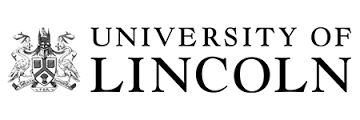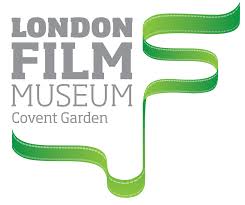“Where language ends, music begins” – Zbigniew Karkowski (experimental musician, 1958-2013)
The full article by Zbigniew Karkowski (written in 1992) is below. The quotation is taken from the end of the article.
“What is good?
Everything that heightens the feeling of power in man,
the will to power itself.
What is bad?
Everything that is born out of weakness.
…Pity stands opposed to the tonic emotions which heighten our vitality…”
-Friedrich Nietzsche
“It seems to me that, today, to be accepted as an innovative composer of serious, contemporary music, all you have to do is to understand what happens on the formal level and then break some of the rules (the same goes for all the other art forms too). It’s like most of the creative work done by young composers is nothing else but only a total rebellion against the teachers. The so-called art music written today must be taken in large cultural setting as a revolt against certain kinds of tradition, it doesn’t have any intrinsic meaning and as a consequence in order to understand it a listener has to have an extensive knowledge of Western culture and particularly of the trends in Western art music over the last few decades. This method of composing doesn’t carry any meaning in itself. The meaning is instead contained inside a listener with all his preconceived knowledge which the music serves only to trigger. It is impossible that anything created this way can ever become objective and real; it remains just as an example never to be understood by another civilization. It’s a closed circuit, and a very limited method of communication, based on artificial presumptions. It’s art for the sake of art itself. Composition has become an intellectual game with systems and the formal manipulation of material as it’s most prominent quality. It has lost contact with reality, it deals with processes that have no adequates in the real world. They are man-made illusions, always relative and very culture oriented. One talks about composition and compares it often to mathematics – we know that there were different kinds of mathematics developed in different civilizations. All man-made systems have one thing in common, they are relative and even if sometimes practical, certainly not necessary. The Egyptians had a strong sense of eternity and their idea of numbers was of pure, eternal entities. The Greeks were passionately devoted to here and now and never thought about eternity, their mathematics was a mathematics of measurements of things – they created geometry. Western man has a sense of time and change, his addition to mathematics are calculus, the mathematics of change and quantum theory, the mathematics of chance. It’s all fine and maybe rational and we all know that any system can work, just think about what sort of absurd systems people believed in the ancient past or Middle ages – that the earth was flat, and it ended approximately twenty kilometers outside of the village where you lived – and it all worked. But was this a true reality? No, it was only a collective belief in, as it often was and is – a false value. For years now there has been much debating among serious composers and art theorists about the conflict of hegemony between formal aspects and content in modern arts. I tell you, this conflict doesn’t exist anymore. In the academic world formalism won at least 40 years ago. There is also presently a lot of discussion about the crisis with audiences for contemporary art music. I don’t think that there is any crisis and even if there is one, it’s certainly on the other side – there is seldom anything to hear anymore. In fact very often when I go to the concerts of contemporary music I don’t hear any music at all – all I hear is hard work. In my opinion some examples of the recent trends in Western art music, like some compositions written in post serial “new complexity” style result in works that are a direct insult to the listeners. I mean you have to think that people who listen to your music are stupid in order to present them with music like this. The exactness is always fake. The notation and graphical aspects of the scores have become more important than the sound of the music itself. The original function of the notation was to help musicians to orientate themselves while executing a piece. Even as late as the baroque era notation was only a relatively free system of cues and general indications for musicians so that they would not loose themselves during performance. It left space for imagination. With time, notation became more and more important and orthodox, something like a substitution of energy of sound by energy of signs on paper took place. The history of Western art music can be seen as a history of degeneration and it’s evil is in essence graphic. It became what it is now, dogmatic constructions for the eye and intellect, small intellectual games that have nothing to do with the reality of sound. And I find it very strange that many composers don’t believe anymore that one can say or even more important – change anything by using sound as a medium. You can’t be more wrong than that. When an artist creates a new work, whether it’s a new book or poem or painting or piece of music, he presents new information. And what follows with it – new ways to process information. This is a social function, we create options and we have to take responsibility for it. It’s very simple, you either have something to say or, if not, you just create more information pollution. And if there is one general thing that one can say about most of the modern composers, it is that they may write well but they often have nothing to say. All good art has only one purpose – to show man his own true face, and its only prerogative must be the necessity to find out the truth at all costs. The truly evolutionary art must be concerned more with living than creating and must realize that the despair of our culture and civilization can only be defeated by acts of total honesty and a faith in the true condition of all men – perfection and the state of Godhead. I don’t believe in thought and intellect, I’m convinced that truth cannot be explained in ordinary logical systems. In fact I see intellect as a barrier preventing us from realizing the true values in our lives, I see it as an inhuman faculty. The real art communicates before it is understood, it contains the knowledge that all men once had, a knowledge that today is unfortunately often ignored and forgotten. I believe that our life is magical in it’s essence. The working of magic is a series of actions bringing intention into focus. It’s a conscious and active participation in transformation between cause and effect. We know that everything we’ve ever done and do is intentional and every intentional act is a Magical act. Not understanding it means human life as a journey from nowhere to nowhere. It is evident that at the core of all the problems of modern man lies his lack of moral purpose and spiritual development. The Egyptians all believed that they were descended directly from the Gods. For them every man was a sort of God, God in exile. For the mediaeval Church, man was an immortal soul, poised between heaven and hell. With eighteenth-century rationalism it has all disappeared and today man is just a member of society with a duty to everybody else. I see history as a steady devaluation of the human being. Modern man has lost his destiny, purpose, and power, for ultimately all real power is the spiritual power and the tendency of everything that is real is always aspiration towards the Godlike. Our mistake is that we lay too much emphasis on the intellect and rationality and we have forgotten that we are in fact Gods. I think that the prevalence of the ideas of strain and suffering and all of the negative messages incoming from the arts today are an effect of this moral degeneration. It’s only a game in the exploitation of neuroses and paranoid states that were created and introduced in people by our sick civilization in the first place. We are being conditioned. Consider the majority of messages coming from popular culture – in its film, books, music and lyrics, young people are being told that the only future they can expect is the future of depression, unemployment, heroin addiction and more and more crime. This is ridiculous and these are the options young people are being given today. And the art music deals with nearly always with intellectual models. Intellect is the secret of out tremendous material progress but also the cause of our spiritual downfall. I believe that the most important fact about man is his ability to change himself. And magic is the art of causing change to occur in conformity with will. Everybody’s life is the road to self-realization, to understanding the truth. Forgetting it and not trying to understand equals dying. For me music has a definite function. I see it as a tool for heightening consciousness, increasing intensity of the mind and ultimately a means of realizing God within ourselves. It should create and amplify the moments of greater intensity of life – the feeling of strength and power. It should open up the sensitivity to this common force that we call God and make everybody aware of it.
I believe that all the individuals who have ever created something of value did so not as inventors but as catalysts of existing forces. They are the ones who simply know how to look and to understand. And so my main reason for working, composing music is not to create pieces all the time but to remain ready when I can. One has to be ready for the moments when all conditions are perfect, when one is in harmony with the powers and then uses it in the most efficient way. One has to be awake and aware. Nearly all the problems existing in our society today are self-inflicted and the reason for them comes from the feeling of unreality of our lives that most people have. The remedy is simple, just wake up. Chance favors those who are prepared. To be an artist is first of all to realize this truth, to overcome the common mediocrity of our conditioned society and ultimately to strive consciously towards a state of absolute spiritual enlightenment. We do it all the time in our dreams, the trick is to do it while we are awake. For some years now I have been interested in creating music that can be appreciated by beings without any cultural knowledge, music that could be called primordial, archetypal or ritual in the sense of the ritual as the evolution of the individual through sacred time and space. Music directed not to the intellect but to all the senses, music whose only function is the total integration of those sacred energies and forces that exist latent in all of us. In my concerto for percussion and large orchestra, a sonic ritual influenced by a study of Rythmajik, an ancient Semitic Alef-Bet knowledge of the practice of ritual drumming, I concentrate on the research of three parameters – elements: the drum as a magical, power instrument, metabolic properties of repetitive rhythms and the physical power of the sound itself. In many African languages the word for drum signifies both the physical instrument and the various forms of communication between entities including even telepathy. The drum is also the only instrument that has direct physical counterpart within our bodies. Our ear canal, ending with the tympanic membrane (eardrum) is the archetype of the drum, of which all physical drums are copies. So it is no coincidence that the drum is the most commonly used ritual in all cultures, the traditional instrument of the shamen or magician, the tool for communication with forces and spirits inside and outside of us. All over the world, amongst primitive societies, the beating of a drum patterns is used for invocations, and bringing forth of powers. Through the use of rhythmic patterns (a specific order of vibrations) the participants’ vision is focused and conditioned by the rhythmic pulsation of the synapses triggered by their ear-drums and other parts of their bodies. Through this process the awareness of the participants is harmonized with higher consciousness of the specific powers invoked. Ritual music (and until quite recent times all music had a ritual function, art music is a very young phenomenon) was and is used in many pretechnical cultures to create and affect changes in people and their environment. Throughout the world there exist various traditions of ritual beat patterns. By using them one summons forth thunder, rain, or sun, one engineers the brain, the body and it’s hormones. These powerful beats change the entire metabolic regulator systems in our bodies. Drum sounds are often used for healing of various diseases and introducing trance states. And it really happens, the inherent rhythms and frequencies of sound do physically reconstruct our reality. In all ritual music the hypnotic aspect is achieved mainly through repetition. Repetitive rhythms gain their power through the fact that they can fuse the discrete events with the continuum (actually all continous sounds are made up of discrete events), that is to say they can induce the experience of the inversions of duration (short seems long, long seems short) which are symptomatic of trance states. Because of the drum’s construction and method of playing, the hydraulic (physical) aspects of sound take precedence over the neural. It’s subharmonic frequencies affect all and everybody. Even the neurologically deaf are susceptible to the vibrations. The physical properties of the drum sound are very different to those of the other instruments in the orchestra. A very important aspect of acoustic phenomena are the overtones of sounds. What is commonly referred to as overtones are the harmonic progressions which naturally occur when any given mass is sounded. In western art music where the tempered tuning is accepted, these overtones are consciously controlled by means of reduction or even elimination in the instrument’s construction. Traditional, classical music (and most of its instruments ) works around a body of very specified, refined sounds – sounds that for the most part are separate from the sounds of the world – pure and musical. In our culture there has always been a sharp distinction between “music” and “noise”. Well, to make clear, the music is a sound you like and the noise is a sound you don’t like or “understand”. It’s subjective. In reality all sounds are nothing else but the result of the vibration of materials. Sound is a presence of energy (pressure) vibrating through space, always at the constant speed of 760mph. We form sound by applying energy to some mass/material which in turn transforms and propagates this energy into surrounding medium (air). Since the work of H.L.F. von Helmholz – “Die Lehre von den Tonempfindungen als physiologische Grundlage für die Theorie der Musik” from 1863, it has been known to western science that sound is a manifestation not of linear waves, but spherical zones of pressure propagating in space from the sound source. To describe the variations in sound pressure with time, three qualities must be distinguished: how rapidly they vary – frequency (rhythm), their density or how great a pressure they produce – amplitude (pitch), and the starting points – phase (timbre). These zones propagate by the process of vibration in the air which in turn cause not only our eardrum but our entire body to vibrate too and respond to sound. The knowledge that we react to incoming sound not only with our ears is generally ignored but has profound consequences. Each human organ has a keynote frequency which according to the phenomena of EMI (electromagnetic interference) and physical principles of resonance can be affected and activated. Modern biochemists, physicists and various spiritual leaders all agree that at the molecular level of reality, our bodies and everything around us, our whole universe, are systems of vibrating atomic particles. Vibrations in the visible spectrum vary between 390 trillion and 780 trillion Hz (cycles per second) while the spectrum of human hearing vibrates between approximately 20 and 20,000 Hz. Cells in the ear and throughout the human body vibrate at much lower frequencies that rarely exceed 1000 Hz. For example physicists have shown that the earth vibrates at a fundamental frequency of 8Hz. This is known as the Schumann resonance, and it is a function of the speed of electro-magnetic radiation divided by the circumference of the earth. That alpha frequency (state of deep relaxation) of brain waves is also in the 8 Hz range. The entire body as a total system vibrates at the fundamental rate of approximately 7.8 to 8 Hz, the pulse rate in the human body has a frequency between 0.6 and 1.7 cycles, heart apex contractions 0.3 cycles etc etc. Whatever the vibratory spectrum, we have to view our cells, our senses and our surroundings as vibratory transformers. We all know of the phenomenon of resonance or sympathetic vibration, it occurs when you activate and put into vibration any given mass, all other masses in its environment which have the same keynote frequency will spontaneously start to vibrate too. The feeling of sickness, some of us experience it while traveling in a car or on a plane, are caused by certain subfrequencies generated by the engines and triggering different organs in our body by means of resonance. Science shows us that all individual atoms and molecules have vibration as their fundamental characteristics and are known to be resonant systems. There is a lot of research on the scales of biological rhythms (vibrations) in humans and all the matter in the universe, much of it directed towards applications in military areas. As medical and biochemical knowledge increase, frequency and pulsation appear to be one of the most crucial metabolic stabilizers. Sound is a very powerful sensory manipulator and can even be used as a weapon. The French police now use ultrasonic transducers beaming out two phased waves of frequencies for crowd control during riots and demonstrations. But as we learn more about the physical properties of sound we also discover new facts about the true nature of our universe. These facts, once fully understood and realized, will change the course of civilization. As demonstrated in the work on cymatics (the structure and dynamics of vibration and the studies of patterns evoked by sound) there are specific structural arrangements corresponding to every variety of tone. A Swiss scientist, Dr. Hans Jenny, and a German physicist, Ernst Chladni, have devoted their lives to studying the interrelationship of frequencies with matter by rendering vibrations into physical forms. They scattered sand, liquids, powders, and metal filings on specially constructed discs and obtained precise frequency stimuli by using calibrations of vibrating crystal. As they started to experiment and change the frequencies they applied, the patterns on the discs changed too. Many of the patterns took on organic shapes, very similar to the forms we find in our world. So it seems that all the forms existing in the universe: plants, trees, minerals, animals, even our bodies have their shape created by resonating to some specific frequencies in nature.
In a very real sense then, at the core of our physical existence we are composed of sound and all manifestations of forms in the universe are nothing else but sounds that have taken on a visible form. The music must become aware of the subtleties of its effects. There is no doubt that the body metabolism functions primarily via a combination of electrical frequencies, pulse rates and biochemical hormones. The brain is dependent on input. There is nothing else but sound, all that exists is vibration. My goal is to expand music until there is nothing else but music. If an idea can be proposed, it can also be realized.
Nothing that’s ever said is final, assume that there are always other possibilities.
Where language ends, music begins.”
Zbigniew Karkowski
Amsterdam, March 1992
“I can forsee a music that is beyond good and evil”
F. Nietzsche

Zbigniew Karkowski and Johan Söderberg performing Karkowski’s “For Me and For My Gods”; Austin, Texas, 1990.
Photo by mnortham / N D.




































But isn’t language music too? I’m thinking of things like this: https://www.youtube.com/watch?v=uuPO2Kvqlms
Best wishes
Elaine
LikeLike
Hi Elaine, here is the full article from which the quotation is taken. I hope this is useful.
LikeLike
Where?
LikeLike
The quotation is the last sentence at the very end of the article.
LikeLike